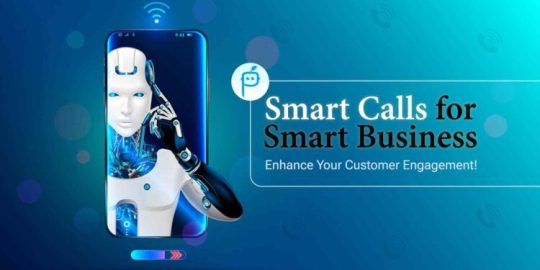#virtual assistants
Explore tagged Tumblr posts
Text

the Office Assistant for Microsoft Office 97 was introduced 28 years ago today ☝️
#so that makes it Clippy (and a few other assistant's) birthday#i wanted to do alot more with this but i was getting bored 💔#im not fixing anything just take it#virtual assistants#clippy#gijinka#object head#webcore#digital art
731 notes
·
View notes
Text
We ask your questions anonymously so you don’t have to! Submissions are open on the 1st and 15th of the month.
#polls#incognito polls#anonymous#tumblr polls#tumblr users#questions#polls about the internet#submitted feb 15#smart devices#virtual assistants#google
144 notes
·
View notes
Text

FINISHED REF FOR THIS FREAK YAYY
@superbellsubways
#papi#msn#microsoft#webcore#virtual assistants#ocs#rico art#hes so fun to draw#been needing to draw him w clippy i feel like rheyd get on eachothers nerves#ok Bue
44 notes
·
View notes
Text
#warriorplus#desktop pc#mail4#affiliatemarketing#taylor swift#jvzoo#aliexpress#ai#amazon#gadget item#KDP#published poet#published work#publishedauthor#independently published#self published#asistan#medical assistants#voice assistants#assistant steve#virtual assistants#ai assistants
2 notes
·
View notes
Text
BRIGHT COLORS/HUMAN HEART

GET UR ASS BACK IN THE COMPUTER!!!!!!!!
#computer virus#computer head oc#computer head#furry#furry artist#virtual assistant#virtual assistants#malware
3 notes
·
View notes
Text
Every damned website and program seems to be bolting on a chatbot and I swear every time it's introduced like... "Now introducing BLORBO, our new AI Assistant! (Which is just ChatGPT in a trenchcoat and sunglasses) It can help in all sorts of ways, ask it anything you want. :) Disclaimer: Do not listen to anything this program tells you! Double and triple check everything! Everything! Do not trust anything it says! Do you understand me?! Do not believe it's lies!"
8 notes
·
View notes
Text
Workplace Efficiency in the Age of Innovation
Technological advancements have reshaped workplace efficiency across industries, revolutionizing operations, communication, and decision-making. From artificial intelligence (AI)-driven automation to enhanced cybersecurity measures and remote work solutions, businesses are integrating technology to remain competitive in an evolving landscape. Companies that leverage efficient digital tools optimize workflows, increase productivity, and enhance communication.
AI-driven tools streamline repetitive tasks, improve accuracy, and allow professionals to focus on strategic responsibilities. Meanwhile, businesses are prioritizing cybersecurity strategies to protect digital assets, while remote work solutions continue to drive workplace flexibility. Organizations must adapt to these shifts to maintain efficiency and ensure long-term success in an increasingly digital environment.
Let's explore how technology is reshaping key aspects of workplace efficiency, from automation to collaboration.
The Role of AI and Automation in Streamlining Workflows
AI-driven tools are transforming business processes by minimizing manual tasks, increasing precision, and allowing teams to focus on strategic initiatives. Businesses are also integrating AI-powered solutions in management to enhance productivity and increase operational agility. Modern product managers now use AI to assist with things like estimating timelines, making risk assessments, and completing document searches.
The integration of AI in product management is also influencing business strategies by analyzing market trends, predicting completion times, and optimizing routine tasks. AI-driven analytics also help businesses tailor offerings to customer needs, improving overall efficiency. Automation tools further contribute by optimizing supply chains, improving customer service, and eliminating inefficiencies. With AI-powered solutions, businesses can focus on growth while maintaining seamless operational workflows.
Cybersecurity Enhancements for a More Secure Workplace
As businesses become more dependent on digital systems, cybersecurity remains a priority. Cyber threats are growing in sophistication, prompting companies to implement AI-driven security solutions to detect and mitigate risks. AI-powered threat detection systems analyze patterns, identify anomalies, and respond to security breaches before they escalate.
Organizations must also prioritize cybersecurity awareness to reduce risk. Employee training programs, device hardening protocols, end-to-end encryption, and proactive monitoring help safeguard sensitive data. A comprehensive cybersecurity strategy strengthens an organization's defenses and minimizes the risk of a potentially costly breach. Businesses that take a proactive approach to cybersecurity also earn the trust of consumers, who care about their personal data now more than ever before.
Technology’s Impact on Workplace Mobility and Remote Work Efficiency
Cloud computing, digital collaboration platforms, and AI-driven mobility solutions have redefined remote work. Businesses rely on cloud-based systems to store data securely, allowing teams to access information from anywhere. Companies can also make employee relocation easier by offering incentives and implementing new technology. For example, AI optimizes workplace relocation by streamlining logistics, predicting potential challenges, and enhancing workforce mobility.
Furthermore, digital collaboration tools support real-time communication, improving productivity for remote teams. AI-powered virtual assistants, automation software, and project management platforms streamline workflow optimization. Companies that invest in these technologies empower employees with flexible work environments, leading to higher engagement and efficiency.
Decision-Making and Predictive Analytics
Big data and AI-powered analytics are reshaping communication and decision-making across industries. AI algorithms are capable of wielding complex data sets to accurately forecast market trends and help managers make more informed decisions. This can identify opportunities for growth and drive innovation.
Predictive analytics has significant applications across various industries. In healthcare, AI has already made waves by successfully uncovering cures for diseases with the support of human researchers. Meanwhile, the financial sector relies on AI-powered analytics for risk assessment, fraud detection, and investment planning. Retailers also use predictive models to enhance inventory management and personalize customer experiences. Businesses that integrate predictive analytics into their strategies can gain a competitive advantage by improving efficiency and anticipating market demands.
Balancing Technology with Workplace Culture
While technology significantly enhances workplace efficiency, it is essential to balance innovation with a human-centric workplace culture. Employees play a critical role in the successful adoption of new technologies. Even the most advanced systems may fail to achieve their intended impact without proper training, communication, and engagement.
Companies should prioritize employee training programs to ensure staff members feel confident using AI-driven tools and digital platforms. Encouraging a culture of adaptability and continuous learning can help organizations transition smoothly into technology-driven operations. Employee feedback should also be incorporated into technology adoption strategies to ensure that solutions enhance—not hinder—daily workflows.
While AI-driven chatbots and automation tools improve response times, personal engagement and empathy remain irreplaceable. Businesses must balance automation and human interactions to provide customers and clients with a seamless yet personalized experience.
The Evolution of Workplace Collaboration Tools
Collaboration has evolved as businesses adopt digital tools that enhance teamwork and efficiency. Video conferencing platforms, cloud-based document sharing, and AI-powered scheduling assistants help organizations maintain seamless communication, whether teams are working remotely or in the office. These tools improve workflow by allowing employees to collaborate in real-time, reducing delays in project execution.
AI-driven collaboration tools provide automated meeting summaries, sentiment analysis, and task prioritization, and further streamlining operations. Businesses are also integrating virtual reality (VR) into collaboration efforts, enabling immersive experiences for training and team-building activities. Organizations must continue adopting tools that enhance communication and foster productivity as workplace dynamics shift.
Future Trends in Workplace Technology
The workplace will continue evolving as technology advances. Emerging trends like AI-driven chatbots, machine learning-based automation, and blockchain technology will further enhance efficiency and security. AI-powered support systems are improving customer experience, too, by reducing response times when consumers raise a query.
Augmented reality (AR) and virtual reality (VR) improve workplace efficiency, too. These technologies enable immersive training experiences, helping employees develop new skills in real-time. AI-driven virtual workspaces foster collaboration across teams, break geographical barriers, and enable seamless remote work interactions.
AI-powered language translation tools also improve global business communication, ensuring seamless collaboration among multilingual teams. Organizations that embrace these innovations will stay ahead in an increasingly competitive business environment.
Conclusion
Technology transforms workplace efficiency, influencing how businesses operate, collaborate, and secure digital assets. AI-driven automation, cybersecurity enhancements, remote work solutions, and predictive analytics drive operational success.
However, businesses must also focus on workplace culture to ensure employees remain engaged and adaptable to change. AI alone isn’t enough to create a culture of innovation. Instead, strategic leaders must make informed choices to empower those employees who make a difference in the workplace. Empowered, motivated employees will make the most of tools like AI and workflow software and are sure to identify opportunities that boost he business’ bottom line.
Katie Brenneman
Katie is a passionate writer specializing in time management, marketing, and education-related content. When she isn't writing, you can find her with her nose buried in a book or hiking with her dog, Charlie. To connect with Katie, you can follow her on Twitter.
Share in the comments below: Questions go here
#workplace efficiency#efficiency#age of innovation#technological advancements#digital tools#cybersecurity#digital environment#AI-powered solutions#product management#workplace mobility#remote work efficiency#digital collaboration#virtual assistants#automation software#project management platforms#workflow optimization#market trends#identify opportunities#growth and innovation#productivity#augmented reality#virtual reality
0 notes
Text
The Role of Artificial Intelligence in Call Centers: Advantages, Challenges, and Innovations
Introduction
Artificial Intelligence (AI) is transforming the call center industry by automating customer interactions, streamlining workflows, and improving service quality. AI-driven technologies, such as virtual assistants, speech analytics, and predictive insights, enhance operational efficiency and customer satisfaction. However, integrating AI into call centers comes with challenges that need strategic solutions. This article explores the key benefits, challenges, and emerging innovations in AI-powered call centers.
Key Advantages of AI in Call Centers
1. Enhanced Customer Support
AI chatbots and virtual assistants provide instant responses, reducing customer wait times and ensuring round-the-clock availability. Natural Language Processing (NLP) enables these systems to interpret and respond to inquiries with human-like accuracy.
2. Boosted Agent Efficiency
AI supports call center agents by automating routine tasks, suggesting relevant responses, and summarizing interactions in real time. This allows human agents to focus on more complex and high-value conversations.
3. Smart Call Routing
AI-powered systems analyze customer history, sentiment, and query type to route calls to the most suitable agent, reducing resolution times and enhancing first-call resolution rates.
4. Predictive Analytics for Proactive Engagement
AI analyzes customer data to forecast behavior, identify potential churn risks, and suggest tailored solutions. This proactive approach helps businesses retain customers and improve satisfaction.
5. Cost Efficiency and Scalability
By automating a significant portion of customer interactions, AI-driven call centers reduce operational costs. AI also enables businesses to scale support operations efficiently without a proportional increase in staff.
Challenges of AI Integration in Call Centers
1. Handling Complex Queries
While AI is effective for routine inquiries, complex or emotionally sensitive issues often require human intervention. Balancing AI automation with human support is essential for optimal service.
2. Data Security and Privacy Compliance
Call centers manage sensitive customer information, making compliance with regulations such as GDPR and CCPA critical. AI systems must include strong security protocols to safeguard data.
3. Legacy System Integration
Many call centers operate on outdated infrastructure, which may not be fully compatible with modern AI solutions. Upgrading or implementing middleware can be costly and time-consuming.
4. Customer Trust and AI Acceptance
Some customers prefer human support over AI-driven interactions. Ensuring that AI systems provide accurate, empathetic, and context-aware responses while allowing seamless handoffs to human agents is crucial.
5. Mitigating AI Bias
AI models can inherit biases from training data, leading to inaccurate or unfair responses. Continuous monitoring and refining of AI algorithms are necessary to ensure unbiased and equitable customer service.
Cutting-Edge Innovations in AI Call Centers
1. Real-Time Sentiment Analysis
AI-driven sentiment analysis detects customer emotions in real time, enabling agents to adjust their approach and prioritize urgent cases accordingly.
2. Voice Biometrics for Secure Authentication
AI-powered voice recognition verifies customer identities using unique vocal patterns, reducing reliance on passwords and enhancing security.
3. AI-Enhanced Speech Analytics
Speech analytics tools analyze call interactions to uncover customer trends, identify compliance gaps, and suggest service improvements.
4. Hyper-Personalized Customer Interactions
AI-driven CRM systems leverage customer behavior and history to offer personalized recommendations, promotions, and support solutions.
5. AI-Powered Multilingual Support
Real-time language translation powered by AI enables call centers to serve global customers seamlessly, eliminating language barriers.
Conclusion
AI is redefining call center operations by improving efficiency, personalizing customer interactions, and reducing costs. However, successful AI adoption requires addressing challenges related to security, integration, and customer trust. As AI technology advances, businesses that strategically implement AI-powered solutions will gain a competitive edge in delivering exceptional customer service

#Artificial Intelligence#Call Centers#AI-Powered Solutions#Virtual Assistants#Speech Analytics#Predictive Insights#Customer Support#Natural Language Processing (NLP)#Agent Efficiency#Smart Call Routing#Predictive Analytics#Cost Efficiency#Scalability#Data Security#Privacy Compliance#Legacy System Integration#Sentiment Analysis#Voice Biometrics#Personalized Customer Interactions#Multilingual Support
0 notes
Text

appealing to the masses
#Artist Note: dont give tumblr your money#virtual assistants#tee#gijinka#object head#tumblr#webcore#digital art#doodle
479 notes
·
View notes
Text
Chatbots: Computer Programs That Allow Customers to Talk to a Business
[et_pb_section fb_built=”1″ _builder_version=”4.27.4″ _module_preset=”default” global_colors_info=”{}”][et_pb_row _builder_version=”4.27.4″ _module_preset=”default” global_colors_info=”{}”][et_pb_column type=”4_4″ _builder_version=”4.27.4″ _module_preset=”default” global_colors_info=”{}”][et_pb_text _builder_version=”4.27.4″ _module_preset=”default” global_colors_info=”{}”] Today I am going to…
#AI chatbots#AI-powered chatbots#business automation#chatbot benefits#chatbot integration#chatbot marketing#chatbot technology#chatbot trends#chatbots#conversational AI#customer service automation#e-commerce chatbots#lead generation#NLP chatbots#virtual assistants
0 notes
Text

mini oscillo ref aahh what EVERRR dies @superbellsubways @cephalonheadquarters
#slowly trynna draw our virtual guys again i miss them so much...#virtual assistants#ocs#rico art#oscillo#more virus stuff and the armies i guess. they all have a unit number if theyre recruited by a formal virus leader w actual power#most viruses r more commonly just stragglers at least in. my head they are#for now theres. 2 main types? viruses that come from virus matter#and viruses that are just.. like that HAHAHA#the idiot twins r a good example of both i guess? theyre comprised of virus matter but more put together than how it usually presents itsel#the way virus matter can properly survive is by taking over an electronic it can live without a host but its much more weak and vulnerabl#without a shell ya feel me#UHHH FEEL FREE TO LIKE. ADD STUFF THIS IS MOSTLY JUST BRAIN GOOP AHHH#i would go on but idk how to properly explain things.. i eventually wanna make a big old post abt it but idk how many people would actually#be interested lol#and i'd have to think abt it much much more#anyways ysaaa
74 notes
·
View notes
Text
Does the Age Tech take into account the fact that the arrivals are baby boomers who know what tech and AI are?
The Age Tech is evolving as baby boomers, who make up a significant portion of today's seniors, become increasingly familiar with technology.
Here's how it manifests itself
Designing more intuitive interfaces
Tech age developers strive to create user interfaces that are simple, clean, and easy to navigate, drawing inspiration from design principles used in consumer apps and devices.
This includes large touchscreens, self-explanatory icons, voice commands and interactive tutorials
Integration of artificial intelligence (AI)
AI is increasingly used in the tech age to personalize experiences, anticipate needs and provide proactive assistance.
For example, AI systems can analyze health data to detect anomalies, recommend personalized exercises or remind people to take medication.
Chatbots and AI-powered virtual assistants also facilitate communication and access to information.
Adapting to Baby Boomers' Technological Habits
Age tech companies are conducting studies to understand how baby boomers use technology and what their specific needs are.
This allows us to develop products and services that fit seamlessly into their daily lives, taking into account their preferences in communication, entertainment and health management.
For example, knowing that many Baby Boomers use social networks like Facebook allows companies to create products that use this platform as a means of communication.
Training and support
There are many initiatives aimed at providing older people with personalized training and support to help them use age tech technologies.
This may include workshops, online tutorials, in-home demonstrations and telephone support.
In short, the tech age recognizes that baby boomers are increasingly comfortable with technology and adapts its solutions accordingly.
The goal is to create technologies that are user-friendly, useful and tailored to the needs and preferences of this generation.
Go further
#Access to information#Technological adaptation#Age Tech#Health management assistance#Proactive assistance#Virtual Assistants#Baby boomers#Chatbots#Voice commands#Communication#Friendliness#Market research#Facebook#Personalized training#Senior technology training#Technology habits#Artificial Intelligence (AI)#Touch interfaces#Intuitive user interfaces#Software and applications#Connected objects#Personalization#Social networks#Technology and aging#Interactive tutorials#Post navigation#Previous#“Age tech” is a growing field#and it is important to distinguish it from “health tech.”
0 notes
Text
The Future of AI in Healthcare: Opportunities, Challenges, and Trends
Will healthcare chatbots score big with voice tech? Explore the potential of AI-powered diagnosis & the future of players like Infermedica, Babylon, & Sensely. #healthcare #AI #chatbots #voicetech #digitalhealth Read more here.
Introduction The integration of Artificial Intelligence (AI) in healthcare is transforming the industry, offering unprecedented opportunities to improve patient outcomes, streamline operations, and reduce costs. For healthcare professionals, technology enthusiasts, leaders, investors, researchers, and market analysts, understanding the potential and challenges of AI is crucial. This article…
#AI#Artificial Intelligence#Assisted Diagnosis#Babylon#Chatbot Market#Digital Health#healthcare innovation#Healthcare Technology#Healthcare Trends#Infermedica#Medical Chatbots#Virtual Assistants#Voice Technology
1 note
·
View note
Text
The New Pet That Doesn't Need Walkies but Might Judge Your Life Choices
Forget walkies—AI pets thrive on Wi-Fi! They don’t need food, but they might judge your midnight snacks. Explore the quirks of having a digital companion that critiques your habits, offers advice, and maybe even becomes your best (or most brutally honest)
In a world where we’ve grown accustomed to the pitter-patter of paws and the occasional midnight meow, a new kind of companion has emerged from the silicon forests of tech innovation: Artificial Intelligence. But unlike your traditional fur baby, this one doesn’t require walkies, vet visits, or midnight snack runs. Let’s delve into the amusing world of AI as the ultimate pet alternative, one that…
1 note
·
View note
Text
Digital Marketing Agency Philippines - Infinity Web Solutions
0 notes
